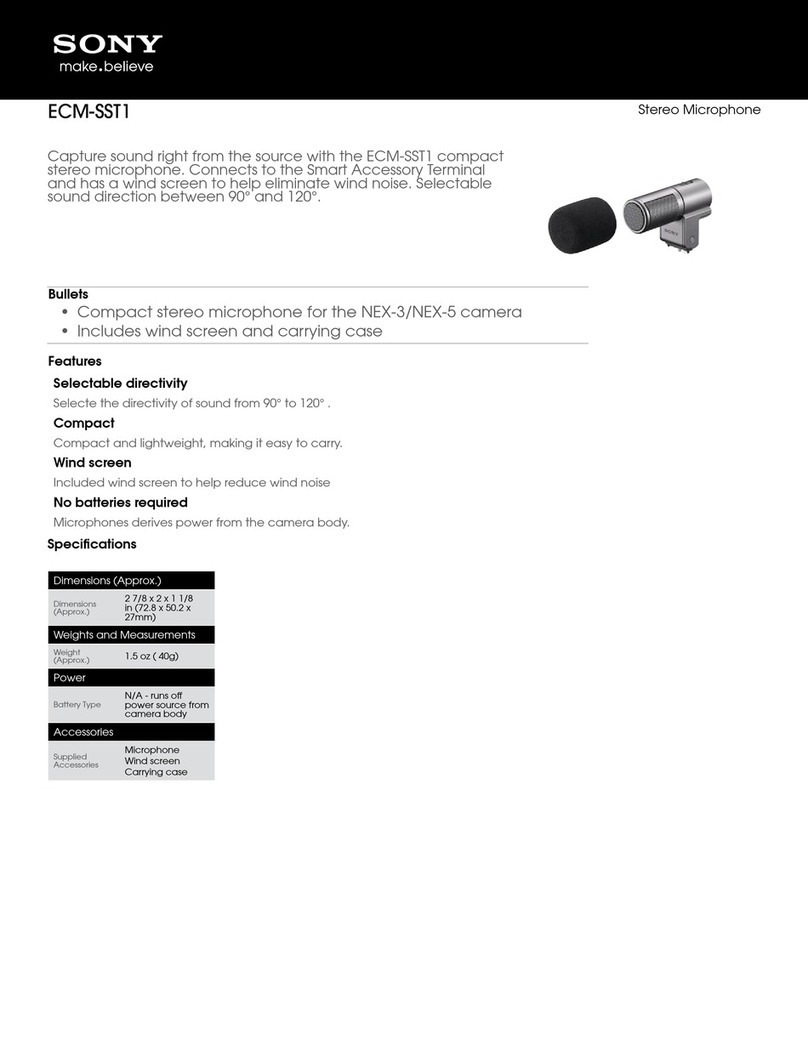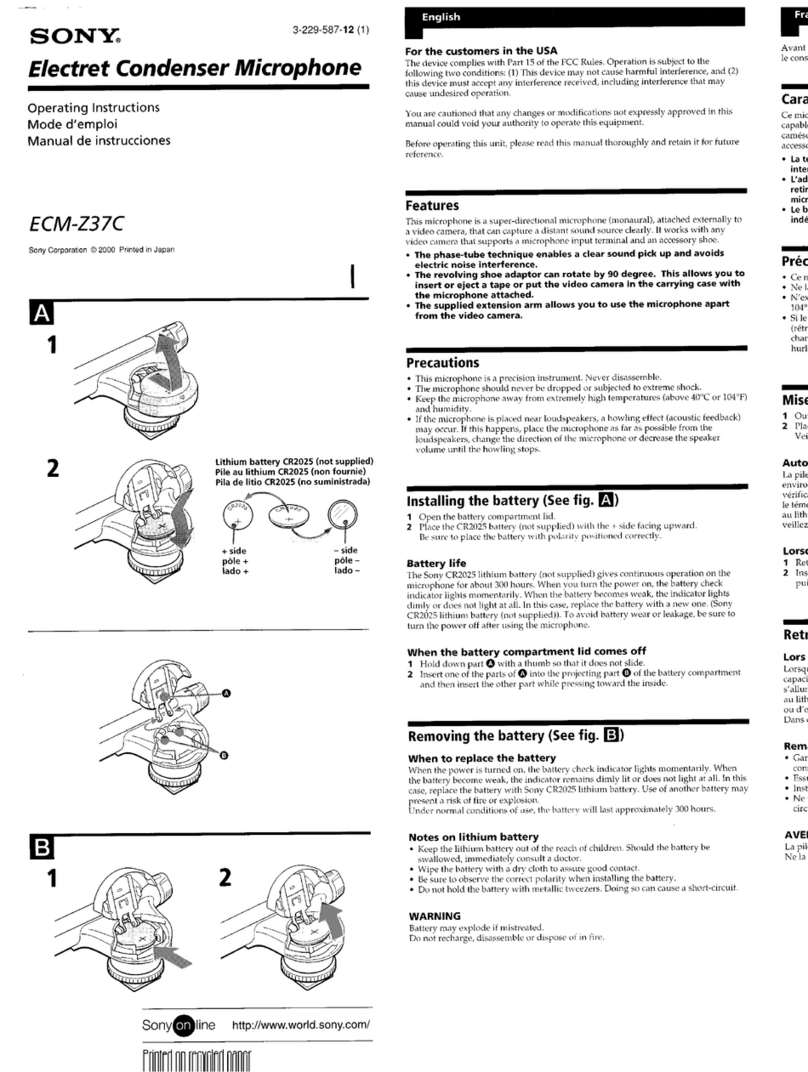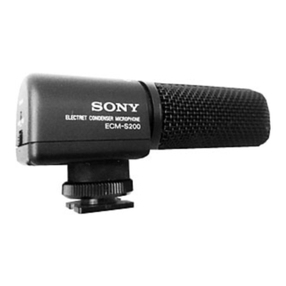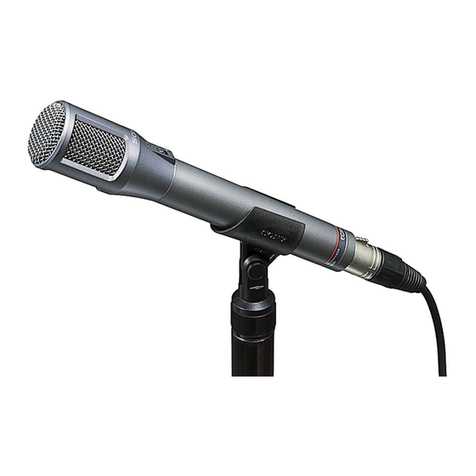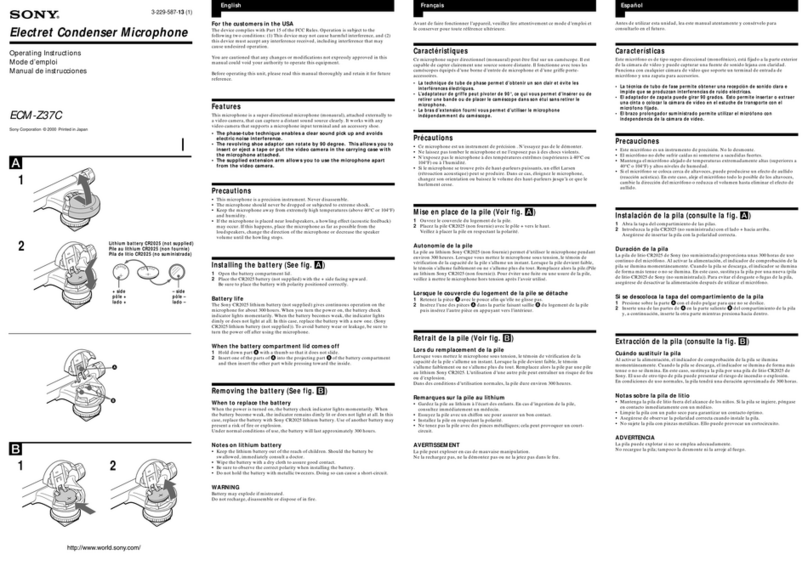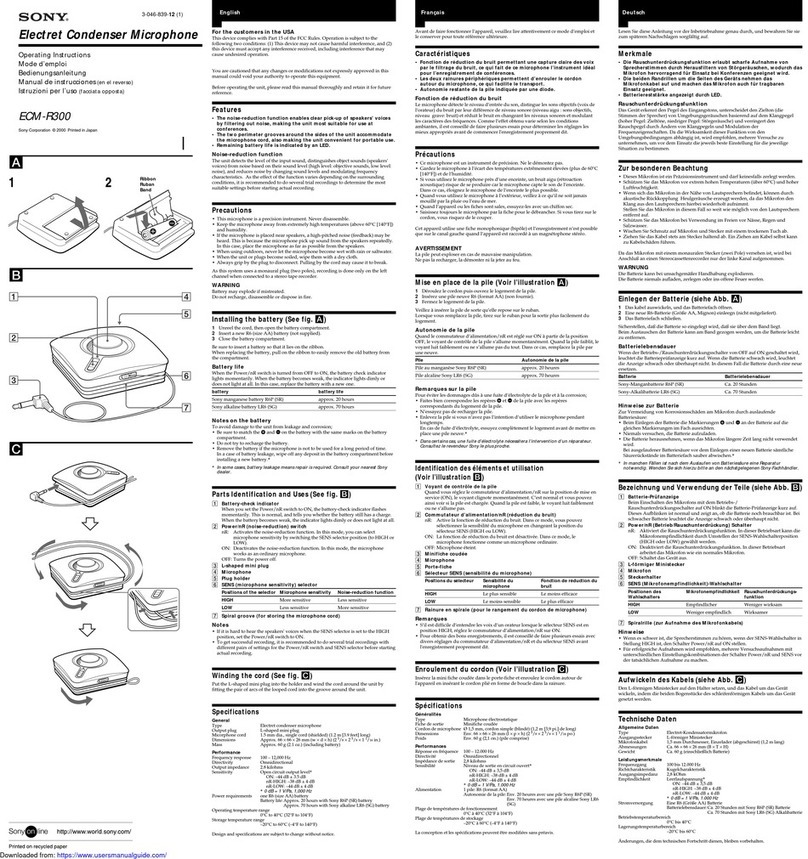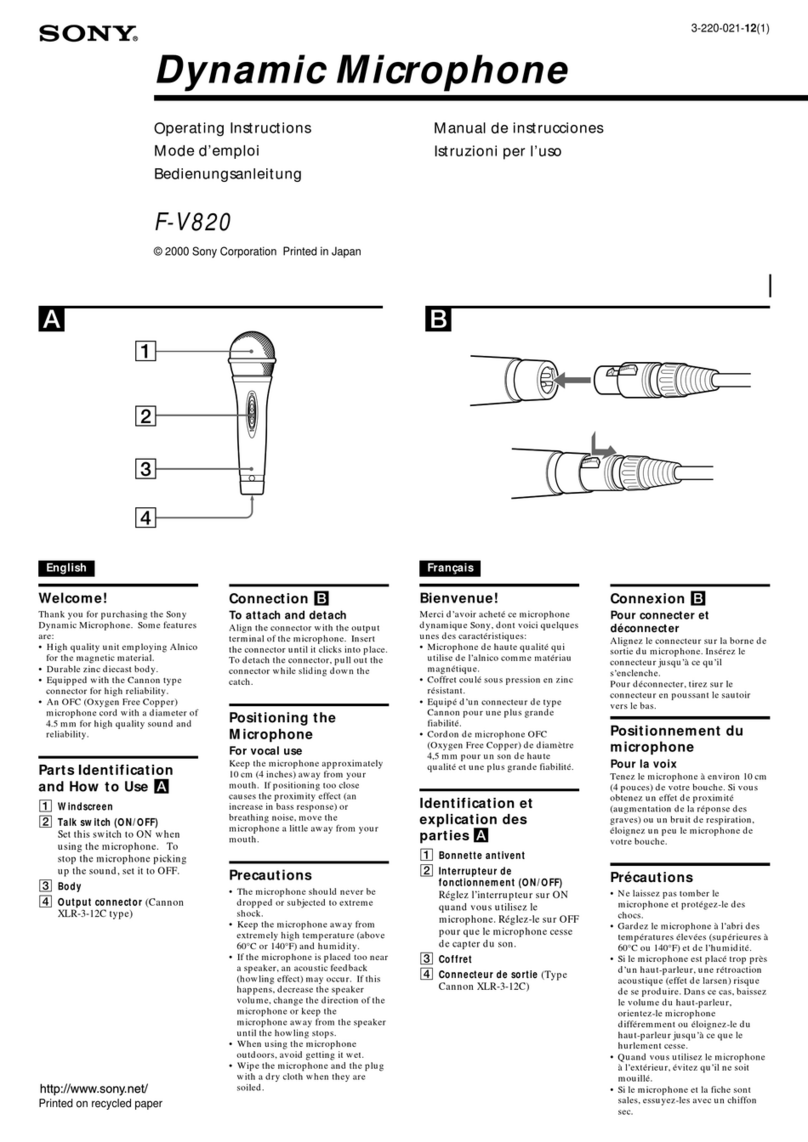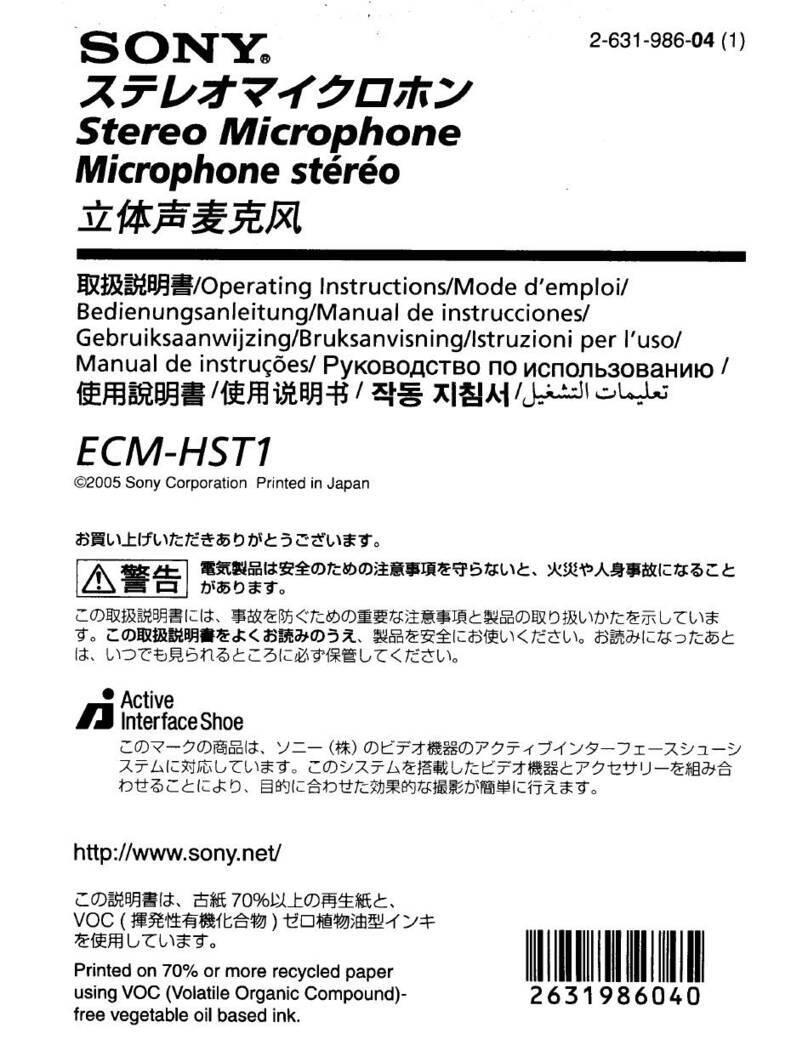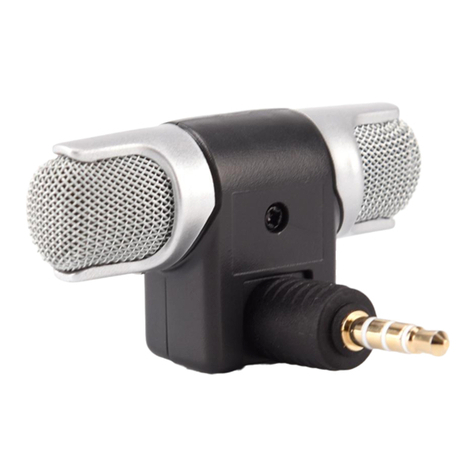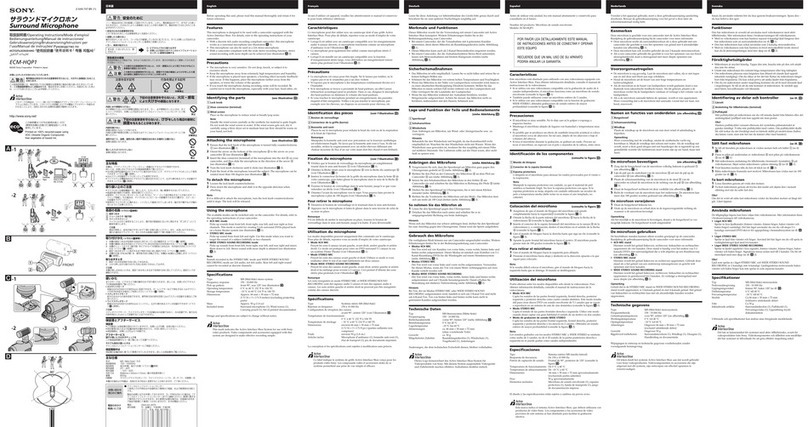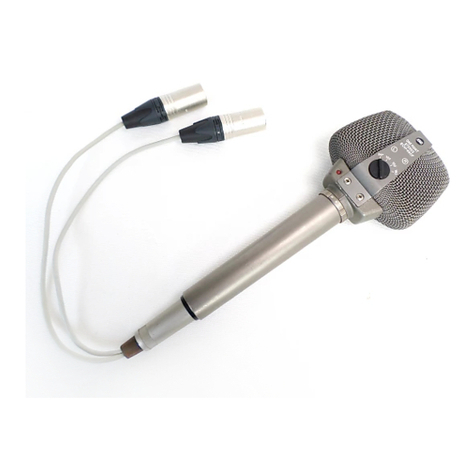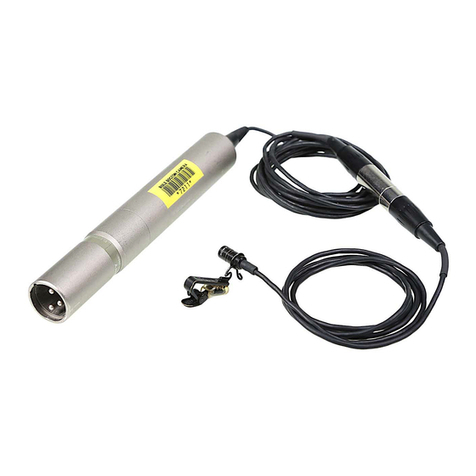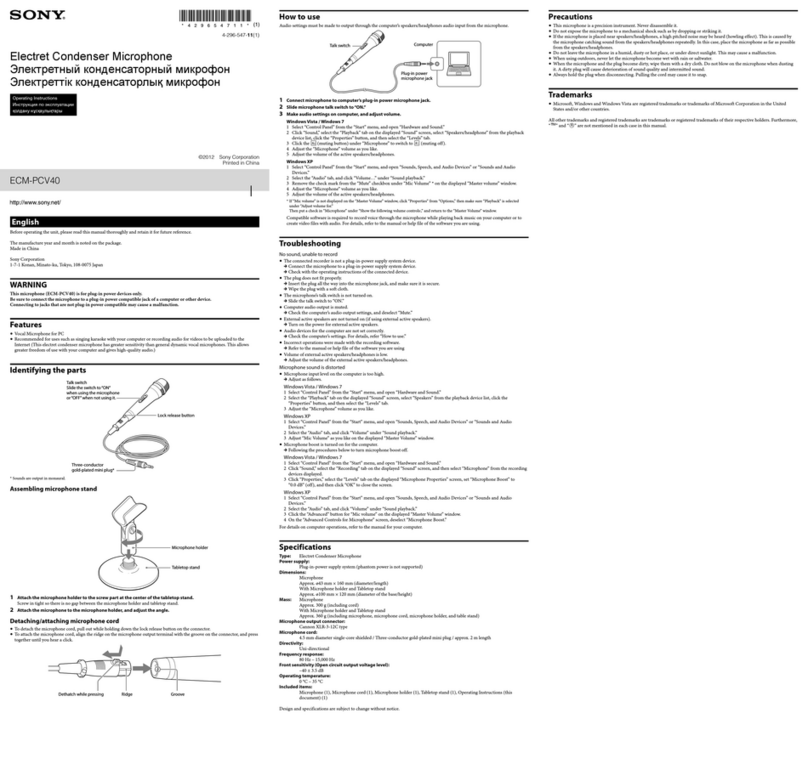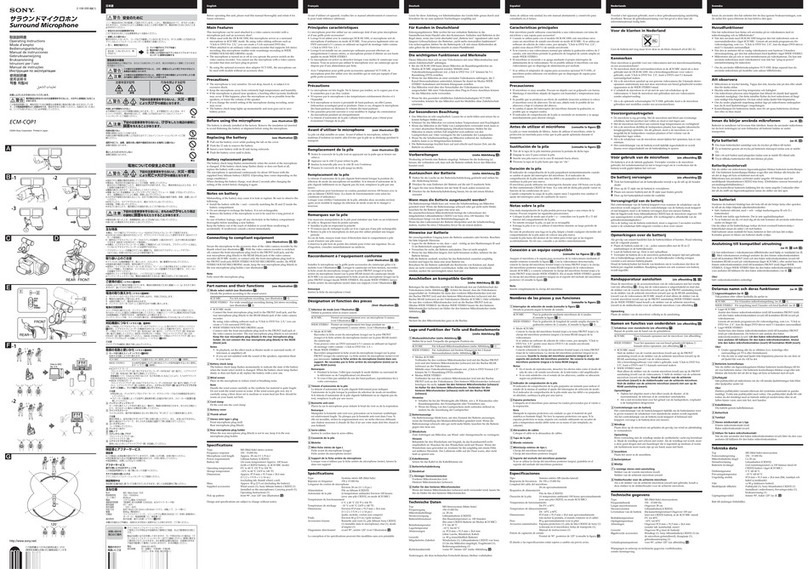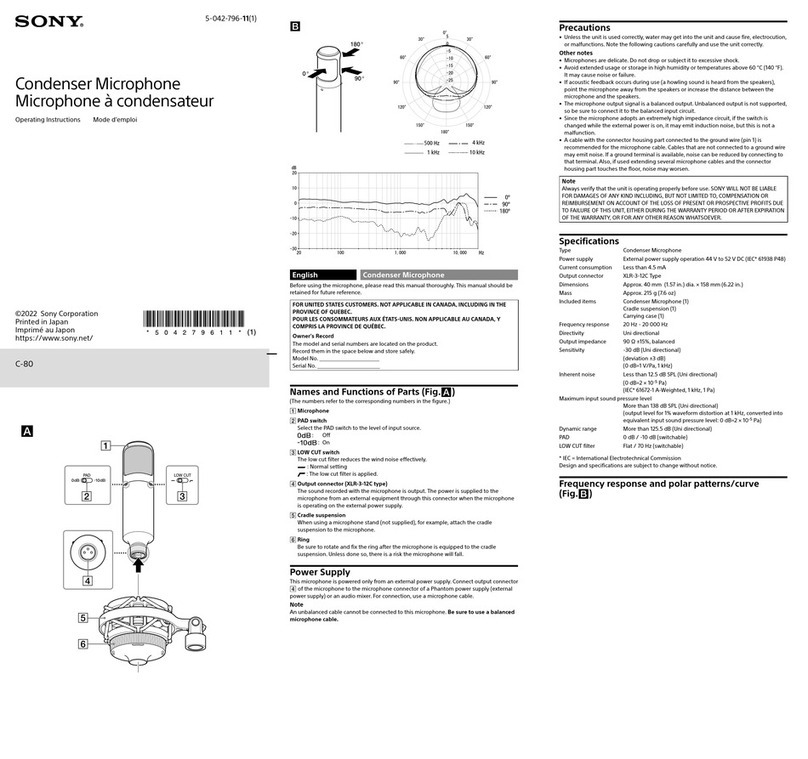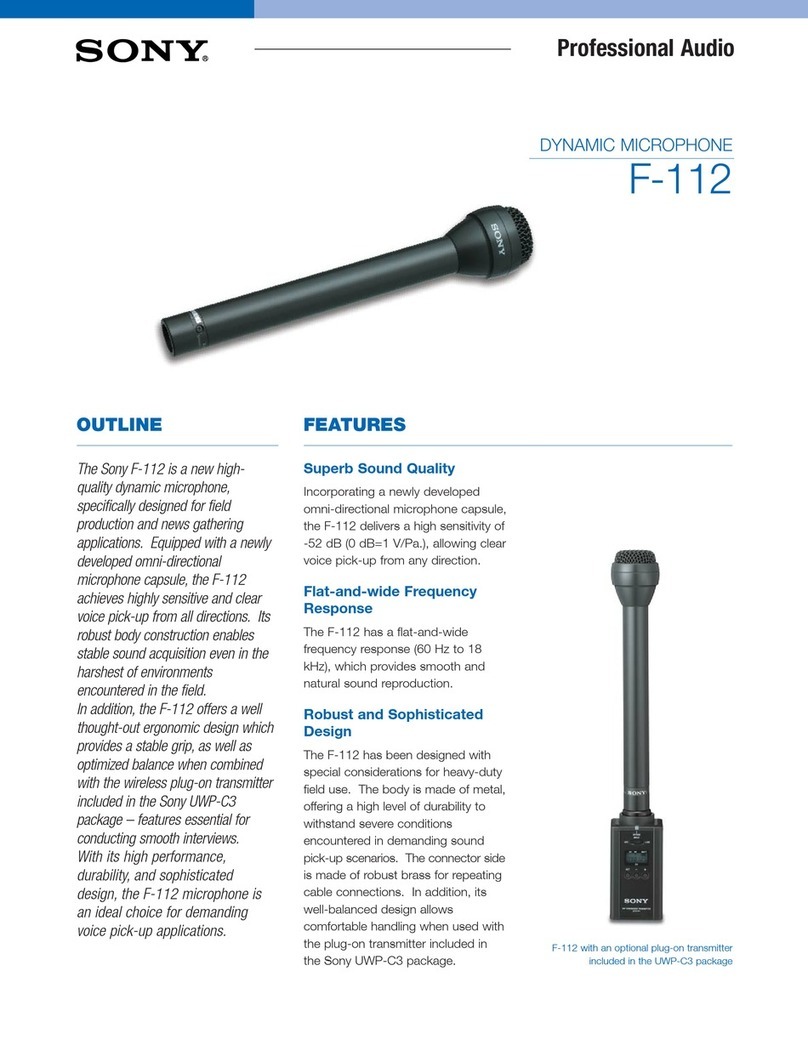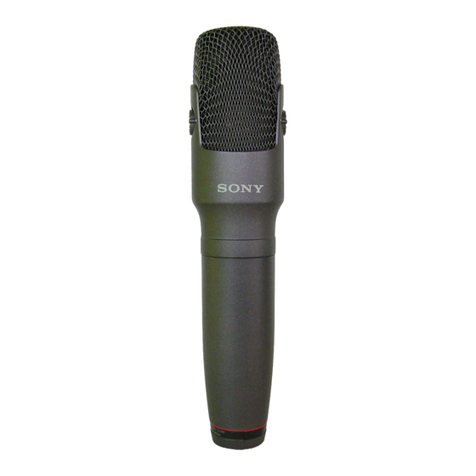
3
•When holding the microphone, do not hook your fingers
on the antenna, or touch or cover the antenna with your
hands.
Doing so can weaken the signal, resulting in noise.
•The unit is designed for use in an ambient temperature
range of 0°C to 50°C (32°F to 122°F).
•Do not place the unit on or near a heat source such as
lighting equipment or a power amplifier, or in a place
subject to direct sunlight or excessive moisture. In such
places, the external finish or internal parts of the unit may
be damaged.
•If the unit is used in a very humid or dusty place or in a
place subject to an active gas, clean its surface as well as
the connectors with a dry, soft cloth soon after use.
Lengthy use of the unit in such places or not cleaning it
after its use in such places may shorten its life.
•When cleaning the unit, never use organic solvents such
as thinners or benzine, which will damage the finish of
the unit.
•The unit has been factory adjusted precisely. Do not
tamper with its internal parts or attempt to repair it.
Notes on Use Introduction
The WRT-867A is a wireless microphone for an 800 MHz
band UHF synthesized wireless microphone system to be
used for broadcast or movie production purpose. The other
system components include the WRT-810A UHF
Synthesized Wireless Microphone, the WRT-820A UHF
Synthesized Transmitter, the AN-820A UHF Antenna, the
WD-820A UHF Antenna Divider, the WRR-810A UHF
Synthesized Tuner, and the WRR-840A/860A UHF
Synthesized Diversity Tuner.
The microphones/transmitters and tuners are classified by
frequency band. See the table below.
A 14 MHz frequency band (or two consecutive-numbered
TV channels) is assigned to each microphone/transmitter
and tuner model. To indicate the assigned frequency bands,
the parenthesized numbers following the model names in
the table show the smaller of the assigned TV channel
numbers.
792.250 – 798.500
799.250 – 805.500
Frequency (MHz)
WRR-810A(66)
WRR-840A(66)a)
WRR-860A(66)
Tuner
WRT-810A(66)
WRT-820A(66)
WRT-867A(66)
Transmitter or
microphone
Model name
66
67
TV
channel
Frequency band
a) For this model, the AN-820A UHF Antenna is required.
If necessary, also use the WD-820A UHF Antenna Divider.

